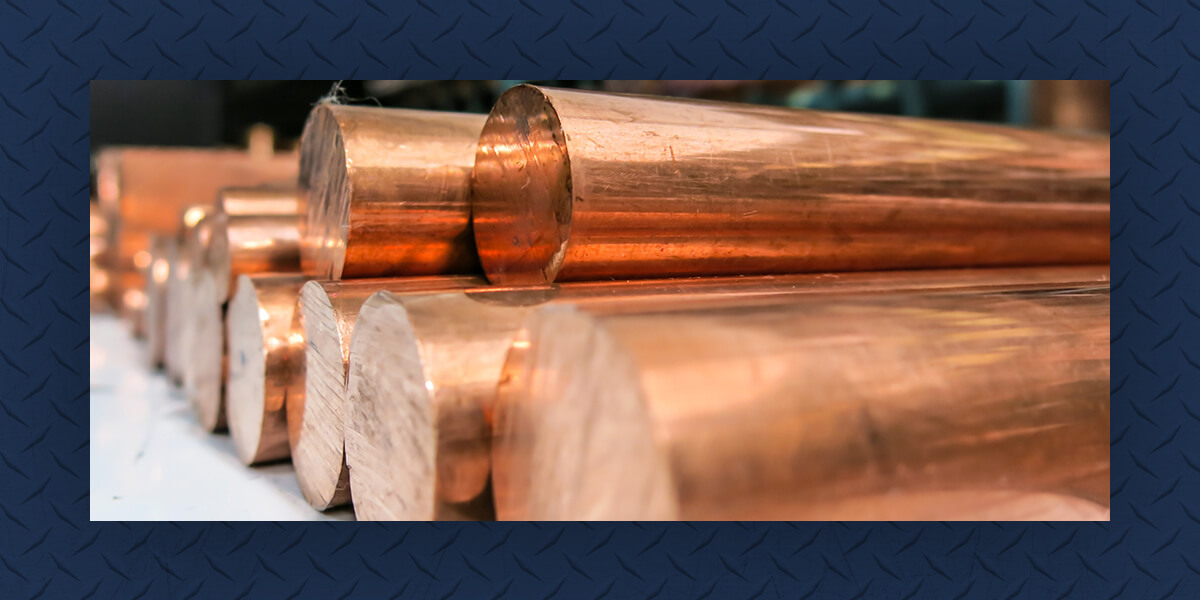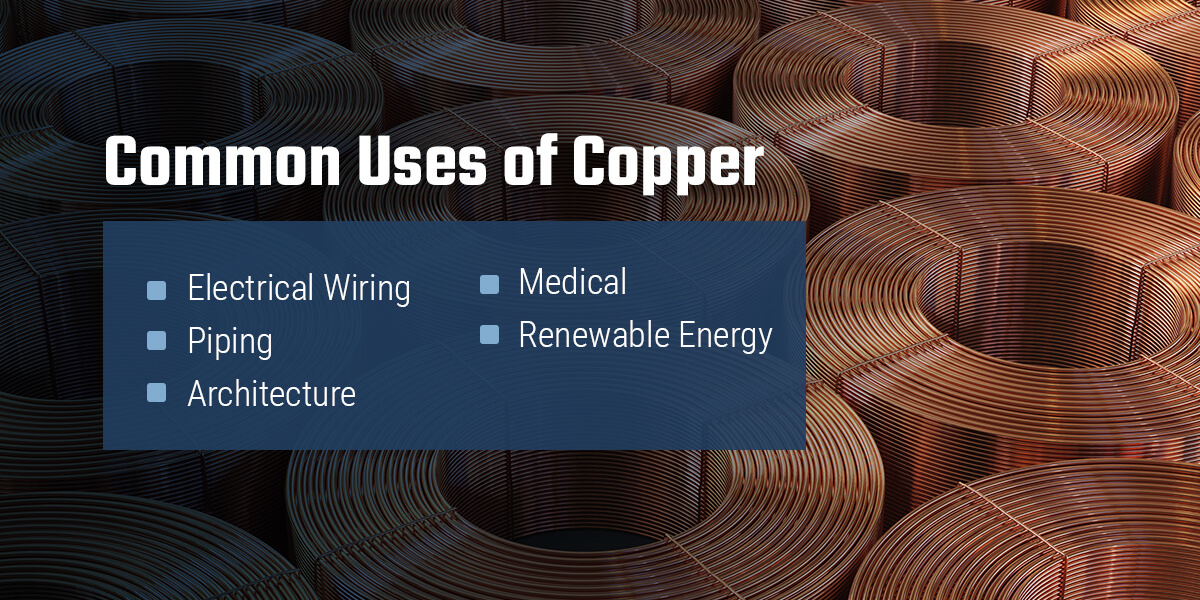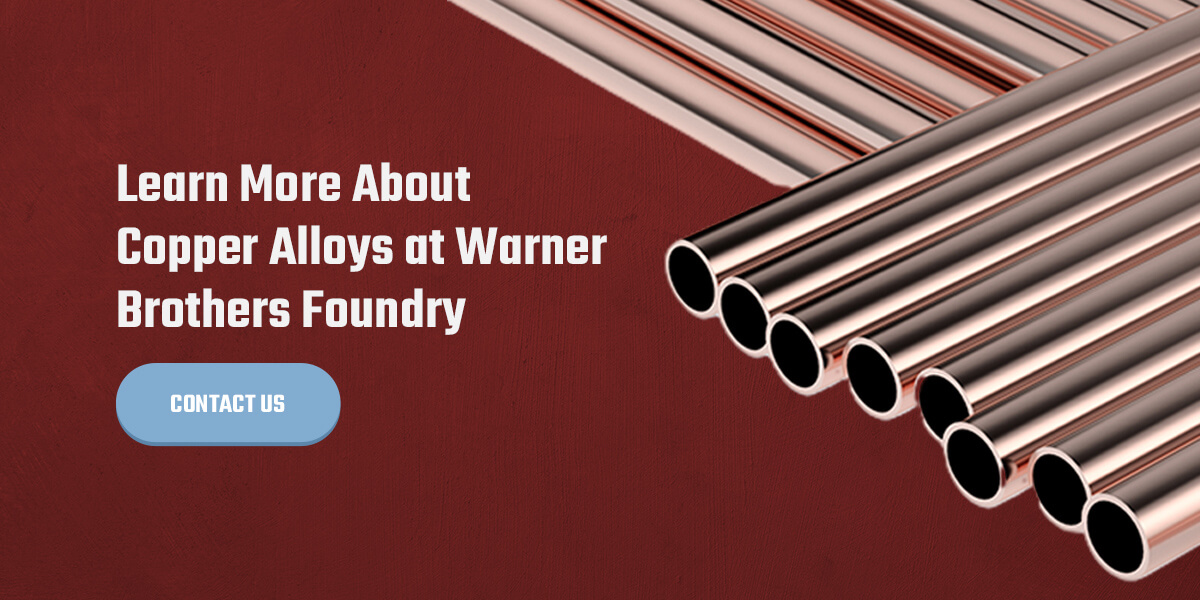Copper is one of Earth’s most widely used metals and ranks third as the most consumed industrial metal, behind iron and aluminum. With a rich history dating back tens of thousands of years, copper continues to drive technological innovation and pave the way for the future. It is fundamental to everyday products like telephone wiring, plumbing, computers, TV and cars.
Jump to
What is Copper?
Copper is widely recognizable for its orangish-pink or reddish-brown color. Its use dates back to ancient times, and it was the first metal humans used to construct weapons, tools, household products and even decorations.
Copper is famous for its use in the U.S. penny but is also the main ingredient within various products humans use daily. Because of its softness, malleability, and extreme ductility, copper is easily cold-worked, making it a highly sought-after and versatile element. Modern copper use became widespread during the 18th and 19th centuries due to its high conductivity, making it an attractive material for electrical engineering endeavors.
Where Is Copper Found?
As a naturally occurring mineral, copper is regularly found in mines worldwide, including Australia, Peru, Mexico and the United States. Chile produces the most copper, with one mine maintaining a capacity of 1.5 million metric tons annually, which aided in the country’s production of 5.6 million metric tons in 2021.
Copper is often discovered in its purest form as a native element. It’s also found mixed with other elements, such as sulfur, forming important compounds like copper oxide or copper sulfate. Common minerals containing copper include malachite, chalcopyrite, and tenorite. Complex smelting and extraction processes must be used to create a usable copper material when mined in these forms.
This element is also found naturally within humans, most commonly in the skeleton and muscle. An average adult has a total body content of 50 to 120 mg of copper. It is present in many foods and aids in many processes, including creating red blood cells.
Properties of Copper
Copper properties offer it many benefits over other metals. Its high thermal and electrical conductivity and corrosion resistance set it apart from the rest, making it the go-to for electrical components, piping and more. Some of copper’s essential properties to be aware of include:
- Corrosion resistance: While copper will naturally oxidize and form verdigris, the unique green patina found on the Statue of Liberty or old copper roofs, it is extremely durable against rust and degradation.
- Electrical conductivity: Copper has the second-highest electrical conductivity rating of all metals, making it the preferred material in radios, TVs and other electrical wiring applications.
- Thermal conductivity: This versatile element is also excellent for transferring heat and cold, making it a beneficial inclusion in car radiators and home HVAC systems.
- Malleable: Copper is highly malleable and ductile, allowing for convenient stretching, rolling, stamping and forging to create pipes, wires, roofing, bowls and bed frames.
- Strength: In its purest form, copper isn’t especially strong, which is why many alloying processes create more durable metals like bronze.
- High melting point: Copper has a melting point of 1,984.32 degrees Fahrenheit. Melting copper is necessary to mix it with other metals to create an alloy.
What Is a Copper Alloy?
An alloy is a mix of two or more metals, so a copper alloy is a mix containing copper. Copper was the first metal people alloyed purposefully, creating crucial metals still used today. When heated to a liquid, copper can combine with other metals to create an alloy. Alloys are often made to accomplish a specific goal — to create a color, improve strength or enhance corrosion resistance. Through tinkering with percentages, copper alloys can be created to fit various applications.
Bronze and brass are two of the most famous copper alloys. Bronze is a strong alloy created from tin and copper, while brass is a highly corrosion-resistant element formed from the combination of zinc and copper. Some other copper alloys include:
- Tin brass: This alloy consists of copper, zinc and tin and offers enhanced hot and cold forgeability while maintaining good corrosion resistance and durability.
- Nickel silver: Also known as nickel brass, this alloy combines copper, nickel and zinc to create a silver metal with significant strength and resistance to corrosion.
- Copper-nickel: Containing anywhere from 2% to 30% nickel, this alloy is highly corrosion resistant, making it a perfect material to use in the marine industry.
Common Uses of Copper
Copper is used across many industries. From household products and jewelry to marine hardware and building materials, copper takes on many different shapes and forms to tackle various projects. Here are some examples of what is made out of copper and its best applications:
Electrical Wiring
Electrical wiring is the largest market for copper use. Copper and its alloys are excellent conductors and allow electricity to move through them easily. Similarly, copper is easily bent and stretched without being damaged.
Copper’s ductility and conductivity mean it is easily formed into complex wiring and cabling, enabling it can fit into tight spaces, through holes and around corners. This metal is popular in many electrical applications, including power generation, distribution, telecommunications and circuitry. Copper is often present in everyday items like phones, computers, kitchen appliances, power cables and heating units.
Piping
Since copper is highly malleable to bend around corners and is resistant to corrosion, it is regularly used for pipes within homes and buildings. Copper pipes often transfer water, oil and chemicals in various industries, providing years of uninterrupted use.
Copper pipes can be found in many applications, including automotive radiators and air conditions, transporting seawater for marine companies, and carrying beer and spirits for food processing companies.
Architecture
For decades, copper has been one of the most adored building materials with its resistance to deterioration and unique charm. It’s been used for roofs, spires, shingles, statues and doors. Designers and architects often feel drawn to it for its color shift from surface oxidation, resulting in a green-blue color. While this oxidation is primarily known for its aesthetic appeal, it also protects the metal from corrosion, extending its life.
Medical
Copper and its alloys are antimicrobial, making copper the first metal to be registered with the U.S. Environmental Protection Agency as a solid antimicrobial material. Research and tests support that copper alloys can effectively kill certain viruses within hours of contact. Because of this, they are widely used as doorknobs, bathroom fixtures and other touch surfaces. Copper is a popular coating for medical devices such as dental implants, keeping sensitive areas free from infections.
Renewable Energy
Due to its high performance in electrical and thermal conductivity, copper has become an essential part of the mission toward a more sustainable world. It is used in renewable systems worldwide, helping to generate power in many forms, including solar, hydro, thermal and wind energy.
Copper is also one of the most recycled metals, increasing its life span and efficiency. Copper can be used over and over without any decreases in performance, helping provide a sustainable material to power the future.
Learn More About Copper Alloys at Warner Brothers Foundry
At Warner Brothers Foundry, we offer comprehensive copper alloy casting services to meet your business needs. Our team is dedicated to providing an exceptional customer experience while supplying you with top-of-the-line, non-ferrous castings that reduce production costs and increase your bottom line.
To learn more about our copper alloy casting services, contact Warner Brothers Foundry online today.




